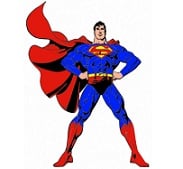 The concept of invulnerable comes from the Latin word invulnerabĭlis and refers to that or that which cannot be harmed . The term is linked to the verb violate : harm, affect, injure.
The concept of invulnerable comes from the Latin word invulnerabĭlis and refers to that or that which cannot be harmed . The term is linked to the verb violate : harm, affect, injure.
Many mythological heroes, deities and superheroes are invulnerable, or at least have enough power or strength to resist all types of attacks. Superman , for example, is nearly invulnerable: only Kryptonite affects his abilities and weakens him.
A man who wears a bulletproof vest and has iron armor that protects his entire body, including his head and face, is invulnerable to many attacks. Of course, if a grenade is thrown at you, you will take damage, since no one is completely invulnerable.
In the field of sport , the team or competitor that, due to its high level, is very difficult to lose is usually described as invulnerable. The tennis player Roger Federer , to cite one case, was invulnerable for a long time: beyond the occasional defeat, the Swiss managed to lead the world ranking for 237 consecutive weeks between February 2, 2004 and August 17, 2008 , a figure that represents a brand.
In a symbolic sense, invulnerable is someone who does not feel affected by what is said about him . A singer may claim to be invulnerable to criticism because he doesn't care what people say about his career and himself. This artist claims that he always does what he wants without paying attention to others. Beyond this public statement, however, perhaps the singer does suffer from some comments, although he does not recognize it.
 In this way we have, on the one hand, physical invulnerability, which represents a high degree of protection against potential harm or against a particular threat, and on the other, emotional invulnerability, thanks to which the individual can emerge unscathed from verbal attacks or attacks. derogatory comments towards him. As we have seen in the previous paragraphs, both on the material and symbolic levels, being completely invulnerable is impossible.
In this way we have, on the one hand, physical invulnerability, which represents a high degree of protection against potential harm or against a particular threat, and on the other, emotional invulnerability, thanks to which the individual can emerge unscathed from verbal attacks or attacks. derogatory comments towards him. As we have seen in the previous paragraphs, both on the material and symbolic levels, being completely invulnerable is impossible.
One of the most curious aspects of this concept is the need for vulnerability to exist in order to understand it. This takes us even further: dangers and risks would not be called this way if there were not someone who could be harmed by their presence. For example, a “flood risk” area is dangerous for people who decide to settle or stay there too long; However, if the flood could not cause us any harm or destroy our belongings, then we could ignore it or, at most, indicate that there is a "possibility of flooding."
Returning to the concept of invulnerable, why would we use it if there really was no danger that could threaten its integrity? We could explain it based on the fact that invulnerable beings and objects are distinguished from the rest of the individuals or specimens of their species or class . However, it is necessary to emphasize the fact that invulnerability can generally be achieved to a degree close to one hundred percent and only in some aspects, but not in all. In other words, we are all vulnerable to some things and, perhaps, invulnerable to others.
This point of view leads us to think that the existence of both terms becomes necessary only to indicate on very defined occasions the special vulnerability or the rare invulnerability to a given stimulus . If we think about spring pollen allergy, to cite an example, it is possible to affirm that children are a group that is especially vulnerable to it; When faced with a disease that we have already suffered, such as chickenpox, we can say that we are invulnerable and that for that reason we are not afraid to approach those who are currently affected.
